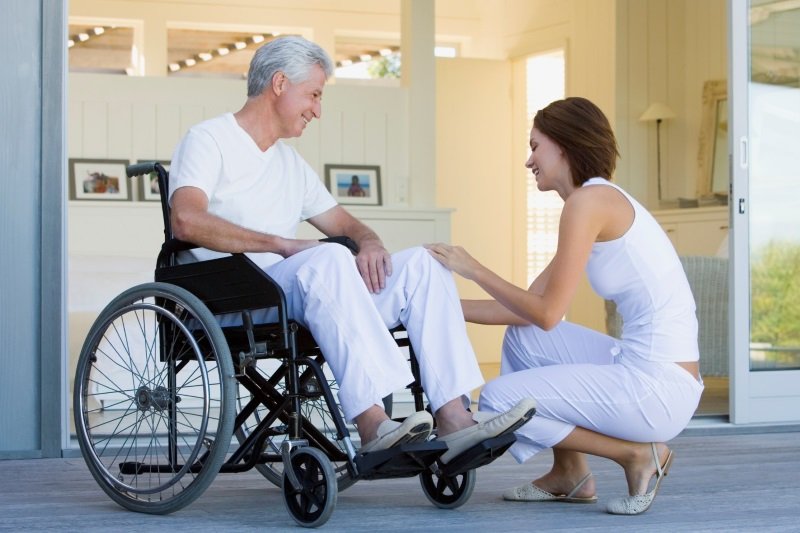The first group of disability
The first group of disability can be obtained by people with permanent or very long-term complete disability.. Besides, such patients need constant care and special assistance. Usually, These include patients with very severe illnesses., eg, terminal cancer patients, completely paralyzed people, amputees. People with congenital or acquired blindness, deafness, dumbness also belong to the disabled of the first group.
Also, this disability group can be assigned to persons, completely unable to move independently due to congenital or acquired diseases, spatial orientation, communication and self-control. To work such people, usually, can not.
Sometimes, when creating special working conditions, disabled people of the first group are able to perform certain types of work, but they still need constant care. for example, completely blind or deaf people can work in specially organized conditions, eg, making buttons, etc..
The second group of disability
The second group of disability can be received by people, with significant health impairments and almost completely disabled. At the same time, disabled people of the second group do not need constant care., but often for normal life they need special means.
for example, a patient after amputation of a limb can move independently, but with a prosthesis or wheelchair. Patient, undergone bladder removal, needs special bags to collect urine. Such people can work, if working conditions allow and work does not lead to a deterioration in well-being. for example, man, wheelchair-bound, can be transferred to such a job, which can be performed due to movement restrictions, and this activity should not adversely affect his health.
Third group of disability
The third group of disability can be obtained by persons with persistent, but not a severe health disorder. for example, patients with bronchial asthma (mild to moderate severity), rheumatoid arthritis (at the initial stage) can get a third group. At the same time, a person retains the opportunity to engage in labor activity with slight restrictions and is fully capable of self-service.. Usually, for disabled people of the third group, facilitated working conditions should be created. for example, if a person before the disease worked at night, he can be transferred to a day job.
All disabled people receive additional material assistance, free of charge provided with medicines and necessary means of life (wheelchairs, prostheses, crutches, special footwear etc.).





